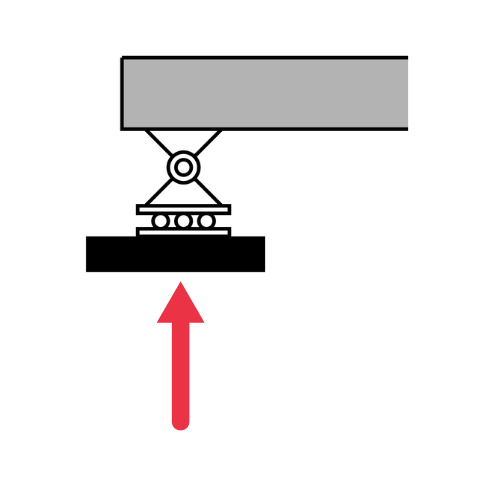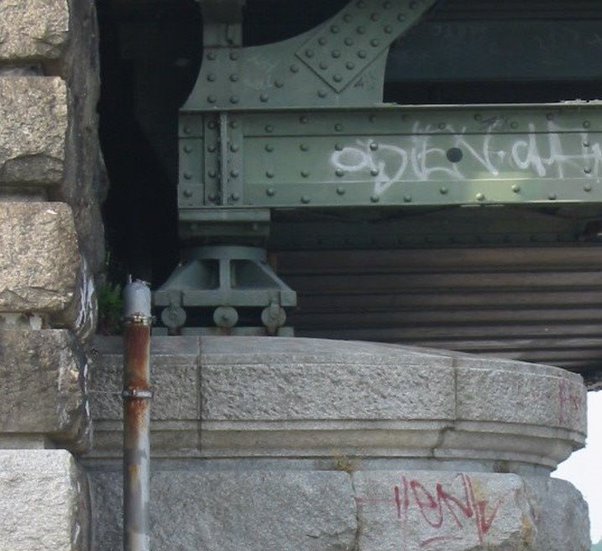Table of Contents:
What is a structural beam?
Structural beams are essential components of many buildings, bridges, and other structures. A structural beam is a horizontal member that provides support and stability for a structure. It is typically made of a strong and durable material, such as steel or concrete, and is designed to withstand a wide range of loads and forces. Structural beams are used to transfer loads from the structure's roof or floors to its supporting columns or walls.

Comparing the different types of beams
There are five common types of beams used in structural design:
- Simple Beams
- Continuous Beams
- Fixed Beams
- Cantilever Beams
- Overhanging Beams
Simple beams
A beam that spans a single distance between two supports is a simple beam. One end of the beam is supported by a pinned support, while the other end is supported by a roller support. These are the most basic type of beam. Simple beams are relatively easy to design and construct.

An example of a simple beam is a beam used to support the weight of a porch roof on a residential house. The beam spans a single distance between two supports, such as the posts of the porch.
Continuous beams
A beam that spans multiple distances between supports is a continuous beam. Continuous beams are more complex than simple beams, and require careful analysis.

An example of a continuous beam is a beam used on a multi-story building. It spans multiple distances between supports, such as columns or walls, and is able to carry the weight of the floors.
Fixed beams
These beams are supported at both ends with fixed supports and are unable to rotate or deflect under load.

An example of a fixed beam is a beam that is used to support the weight of a roadway on a bridge. The beam is supported at both ends by concrete piers, and is not allowed to rotate or deflect under the weight of the roadway and the vehicles that travel on it.
Cantilever beams
These beams are supported on one end with a fixed support and have a free end that extends beyond the support. They are used to support loads that extend beyond the support.

An example of a cantilever beam is a balcony that extends out from the side of a building, supported on one end by a structural wall and with the other end unsupported.
Overhanging beams
These beams extend beyond the support on both ends and are used to support loads that are applied along their length.
A single overhanging beam is a beam that extends beyond the support on one end and is supported at the other end. A double overhanging beam is a beam that extends beyond the support on both ends and is supported at intermediate points along its length.


An example of an overhanging beam is a beam that supports a projecting roof or overhang, such as the eaves of a house. An overhanging beam extends beyond the support on both ends and is used to support the weight of a roof on a house.
The different types of beam supports
Supports are used to transfer loads and forces from the beam to the structure. There are different types of external beam supports:
- Fixed Supports
- Pinned Supports
- Roller Supports
Fixed Supports
Fixed supports are considered rigid supports because they do not allow for any rotational or translational movement. Fixed supports are able to resist horizontal, vertical, and moment loads, making them a very strong and stable type of beam support.
An example of a fixed support is the base support of a light pole or wind turbine. The light pole is anchored to the ground and does not allow for any rotational or translational movement of the beam
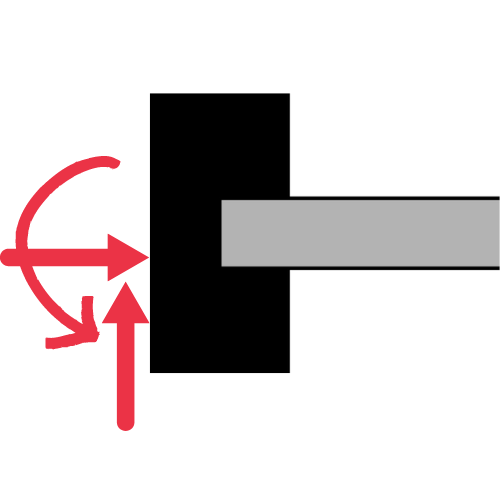
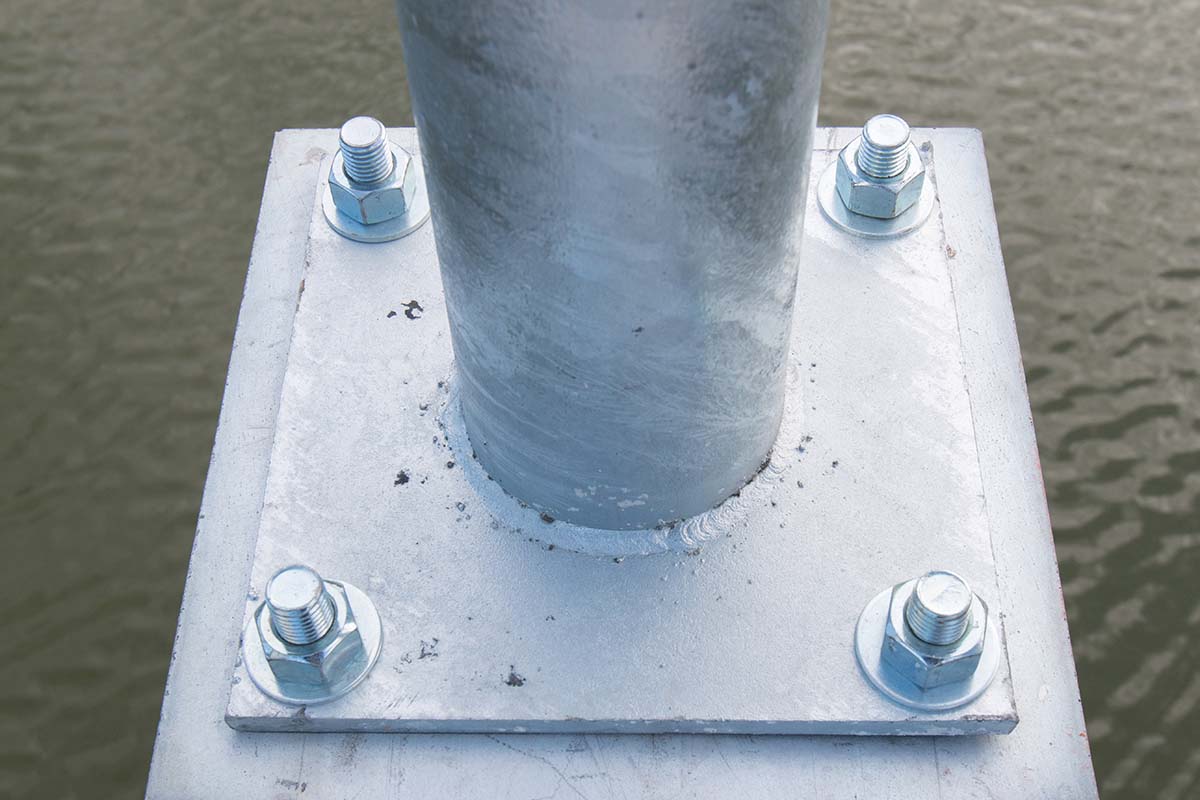
Pinned supports
Pinned supports allow for rotational movement but does not allow for translational movement. Pinned supports are able to resist horizontal and vertical loads, but are not able to resist moment loads due to their ability to rotate.
An example of a pinned support is a door hinge, as it allows the door to rotate about the hinge pin but does not allow for translational movement. The support is able to resist horizontal and vertical loads (such as the weight of the door), but is not able to resist moment loads due to its ability to rotate.
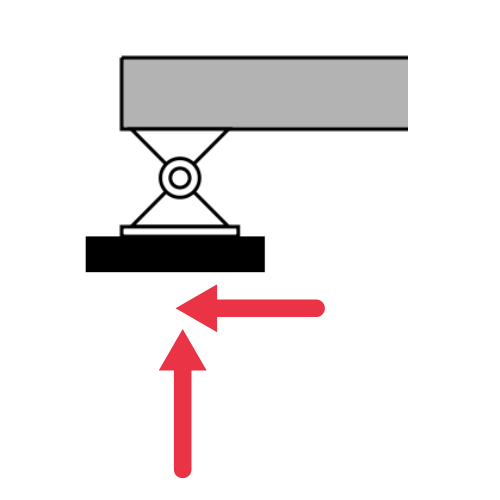
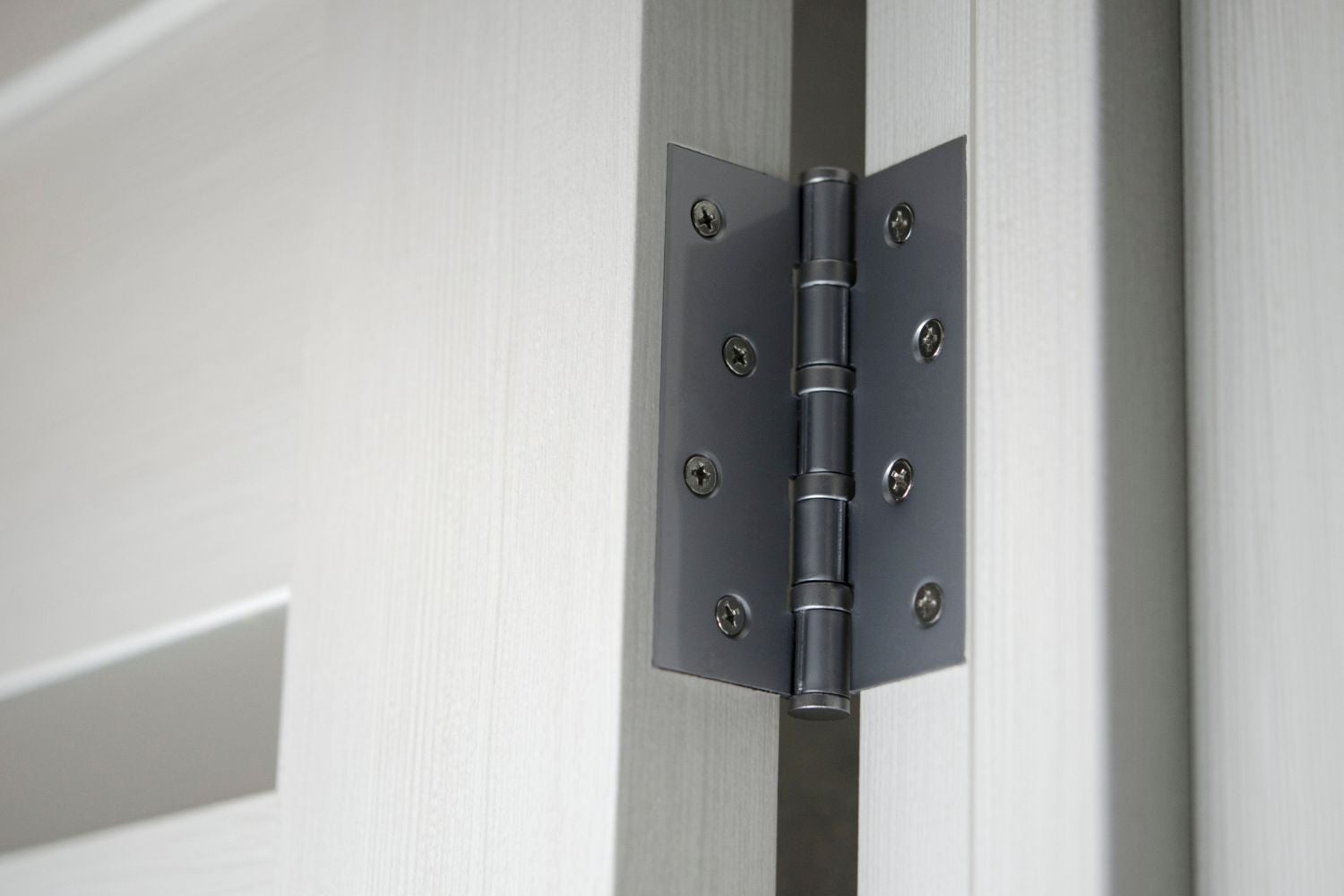
Roller supports
Roller supports allow for rotational movement and translational movement of the beam in one direction only. Roller supports are able to resist either vertical or horizontal loads but not both, depending on the orientation of the support. It does not resist moment loads.
An example of a roller support is on a bridge deck in order to allow for expansion and contraction due to temperature changes. When a bridge expands and contracts, the movement is typically very small, but it can add up over time and can cause problems if the movement is not accommodated. Roller supports are used to allow for this movement by allowing the bridge deck to rotate and translate in one direction only.
